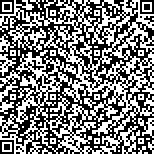1.College of Life Science, Yangtze University, Jingzhou 434023, China;2.National Key Laboratory of Crop Genetic Improvement, Huazhong Agricultural University, Wuhan 430070, China;3.College of Laboratory Medicine, Hubei University of Chinese Medicine, Wuhan 430065, China
S513.3
Get Citation
刘津,汤艳芳,杜何为,张祖新. Phenotype identification and gene mapping of maize kernel development mutant emp35[J]. Jorunal of Huazhong Agricultural University,2024,43(2):85-92.
CopyRelated Videos
Share
Article Metrics
- Abstract:
- PDF:
- HTML:
- Cited by:
History
- Received:April 26,2023
- Revised:
- Adopted:
- Online: April 02,2024
- Published:
Article QR Code
